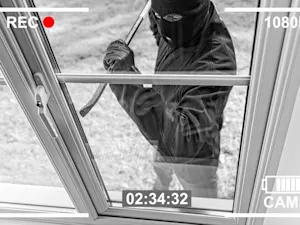
Are Higher SPF Sunscreens Better?
You all know the drill: always apply sunscreen before going out in the sun. But when it comes to choosing the right SPF, the numbers can be confusing. What is SPF, and is SPF 50 really that much better than SPF 30? Join us as we break down everything you need to know about SPF.
What Is SPF?
Sun Protection Factor (SPF) is a measure of how well a sunscreen protects your skin from UVB rays — the kind that cause sunburn. The SPF number is calculated based on how long it takes for your skin to start reddening under the sun with sunscreen compared to without it. For instance, if your skin would normally burn after 10 minutes in the sun, applying SPF 30 should theoretically allow you to stay in the sun for 300 minutes (30 times longer) without burning. However, this doesn't mean you should stay in the sun for that long, as other factors like sweating, swimming, and even the sunscreen's thickness can reduce its effectiveness.
The Facts About High-SPF Sunscreens
A common misconception is that a higher SPF provides exponentially better protection. While it's true that SPF 50+ sunscreens do offer more protection than SPF 30, the difference isn't as significant as you might think. SPF 30 blocks about 97% of UVB rays, while SPF 50 blocks approximately 98%. The difference of just 1% might not seem like much, but over time, that extra exposure can add up, particularly if you're spending extended periods outdoors.
However, in real-life conditions, higher SPF sunscreens can create a false sense of security. Many people believe they can stay in the sun longer without reapplying sunscreen, this is not the case and can lead to more UV damage overall. Furthermore, SPF only measures protection against UVB rays, not the more deeply penetrating UVA rays that can cause skin aging and increase the risk of skin cancer. That's why choosing a broad-spectrum sunscreen that offers protection against both UVA and UVB rays is so important.
How to Use Sunscreen
To get the most out of your sunscreen, it's essential to use it properly. First, apply enough sunscreen: about an ounce, or the size of a shot glass, to cover your entire body if you're in a swimsuit. Most people apply too little, which significantly reduces the effectiveness of the product. Sunscreen should be applied at least 15 minutes before going outside to allow it to properly bind to your skin.
Reapplication is also key. No matter the SPF, sunscreen should be reapplied every two hours, or immediately after swimming, sweating, or towel drying. The effectiveness of sunscreen diminishes over time, especially if it's exposed to water or friction from clothing. Even if you're using a high SPF sunscreen, it won't protect you all day without reapplication.
Sunscreen Is Not Enough
Relying solely on sunscreen is not enough. Sunscreen should be part of a broader sun protection strategy. In addition to wearing sunscreen, seek shade whenever possible, especially during peak sun hours from 10 a.m. to 4 p.m. Wear protective clothing, including a wide-brimmed hat and UV-blocking sunglasses, to shield your skin from harmful rays.
Remember, no sunscreen can block 100% of UV rays, and overexposure to the sun can lead to skin damage, premature aging, and an increased risk of skin cancer. By understanding what SPF really means and how to use sunscreen effectively, you can better protect your skin while still enjoying the outdoors.
References: What Does SPF Mean? | What does the SPF rating really mean? | Ask the Expert: Does a High SPF Protect My Skin Better?

























